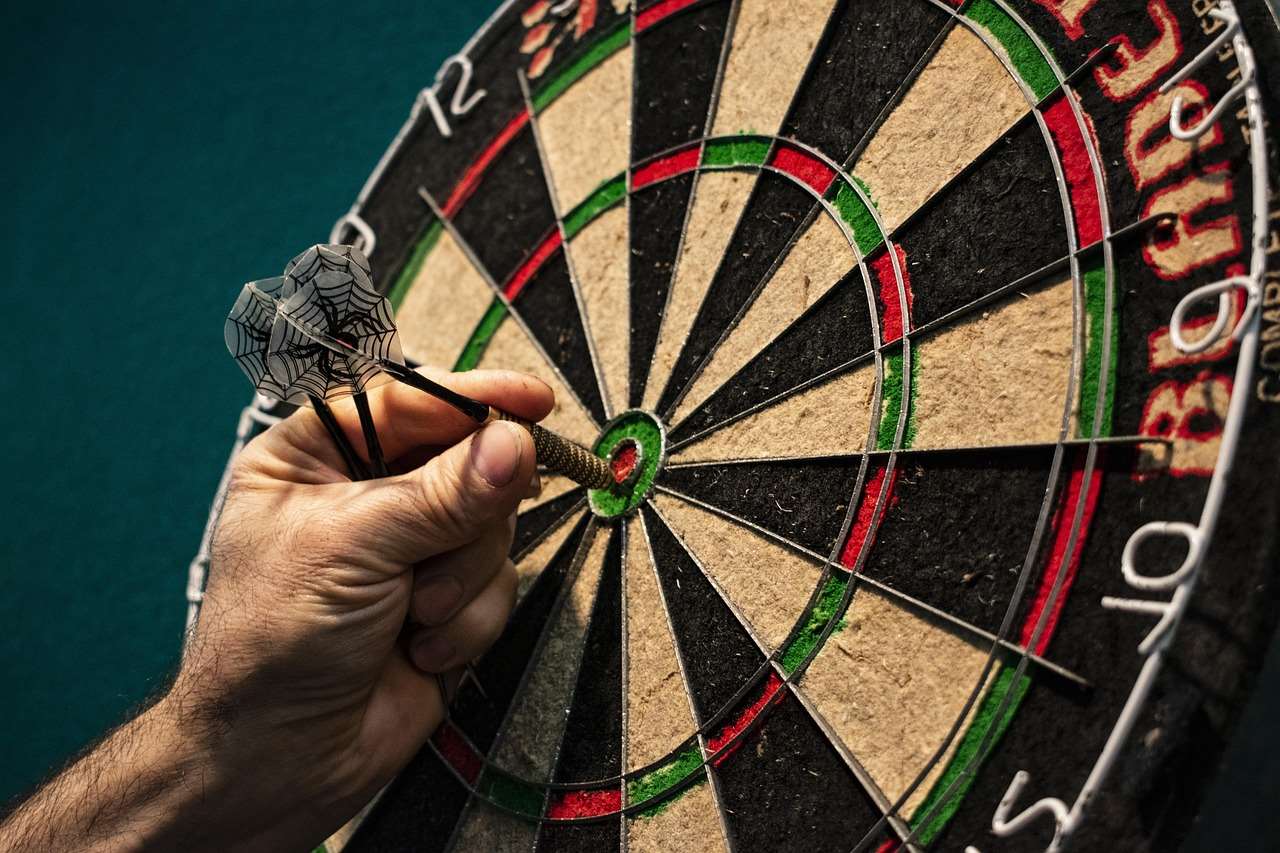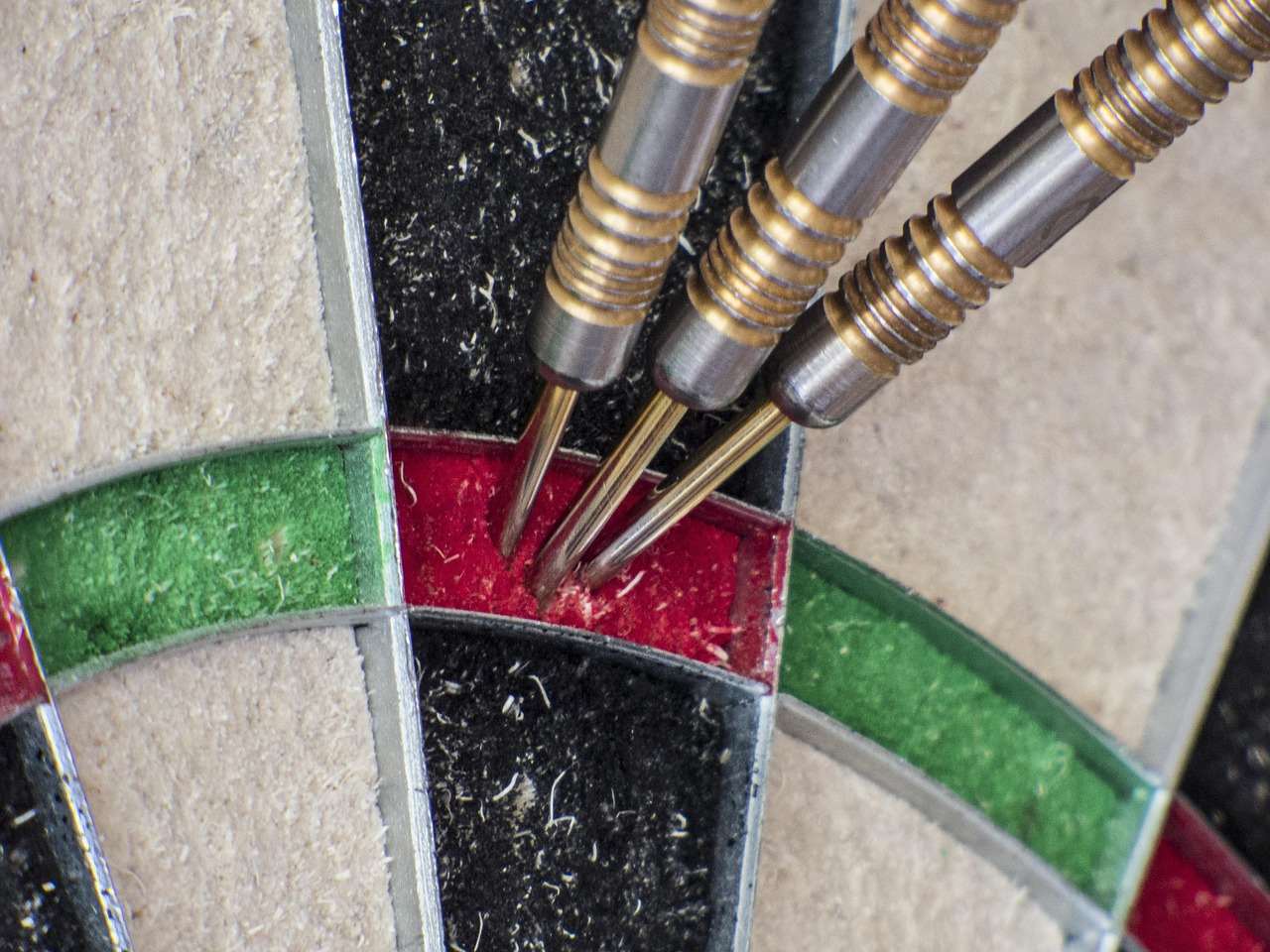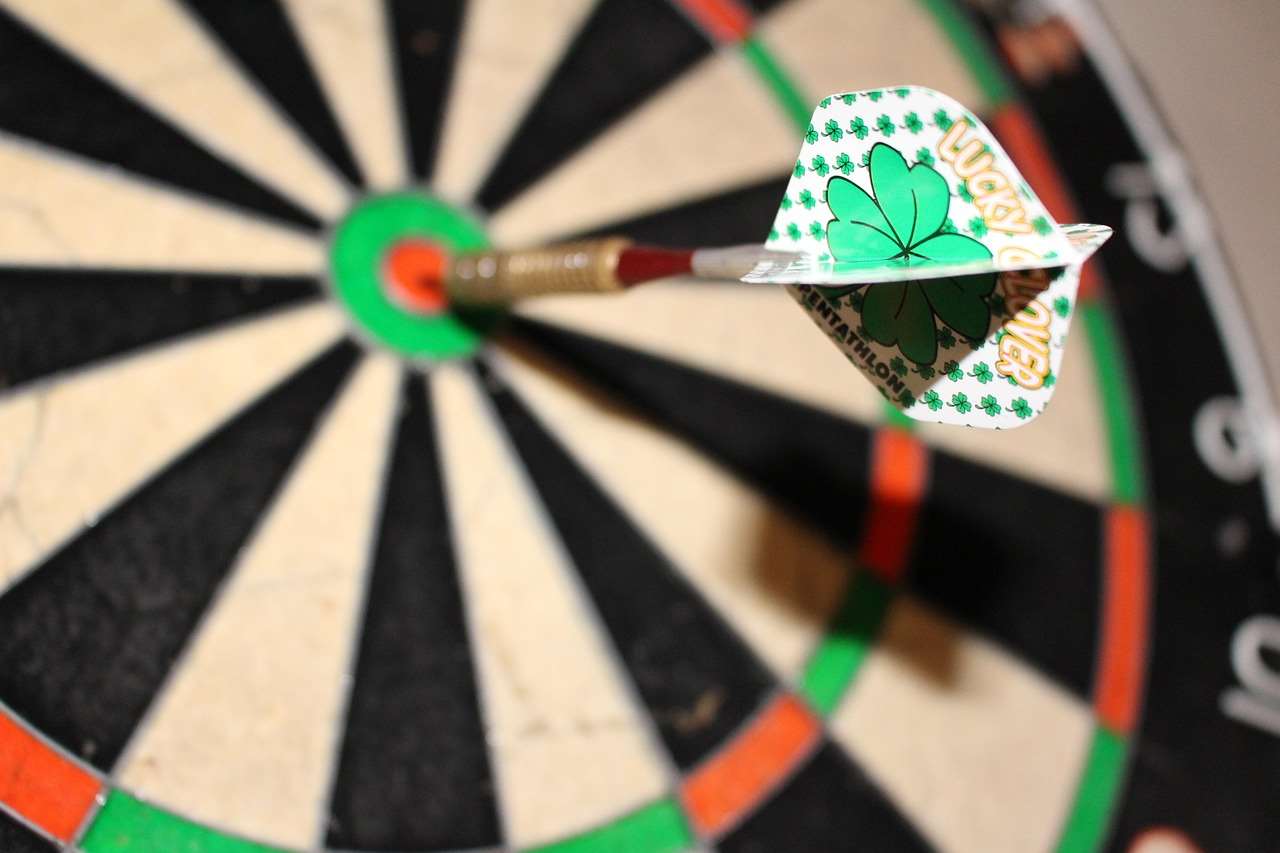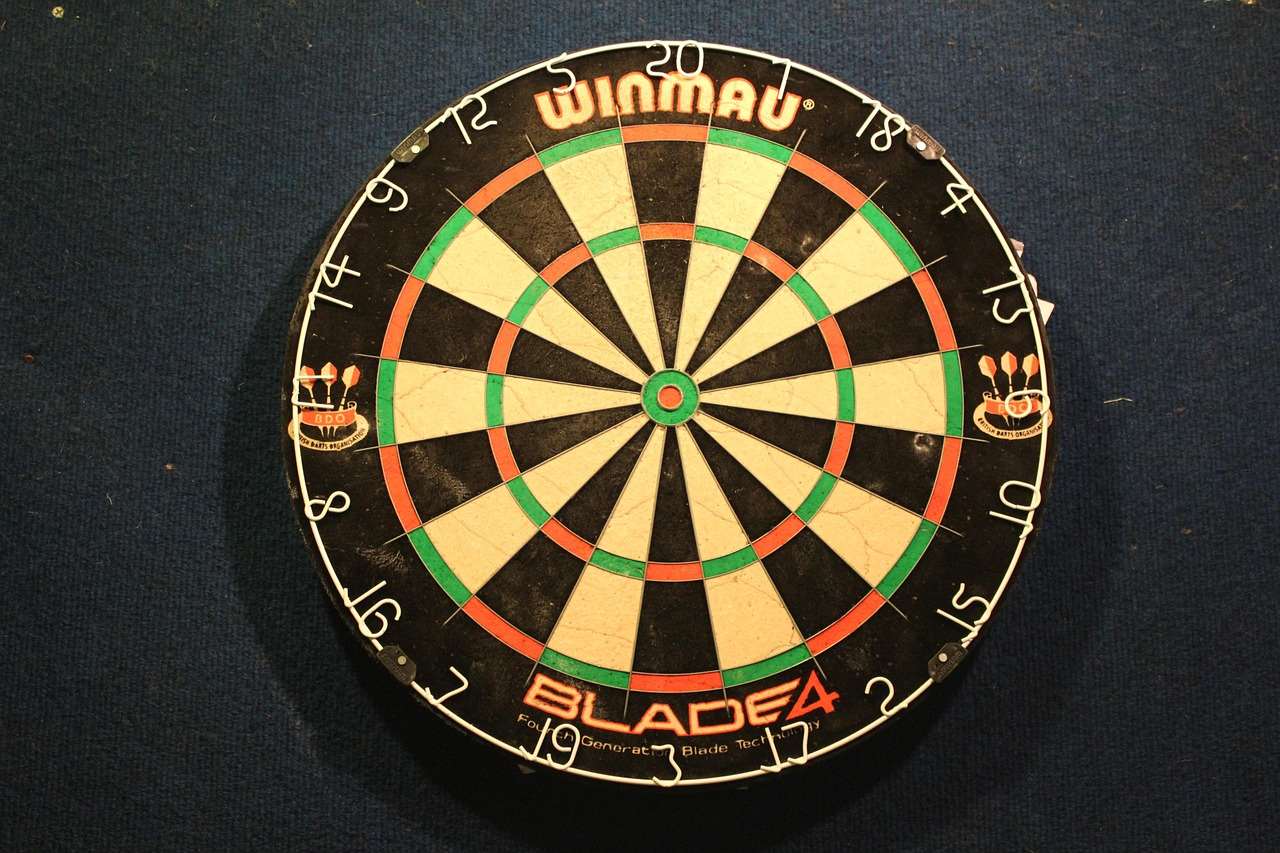Understanding your Dart Throw Line Options is crucial for fair play and consistent performance in darts. This article provides a comprehensive guide to the official regulations surrounding the oche (throw line), explores different variations players might encounter, and offers tips for adapting to various setups.
⚠️ Still Using Pen & Paper (or a Chalkboard)?! ⚠️
Step into the future! The Dart Counter App handles all the scoring, suggests checkouts, and tracks your stats automatically. It's easier than you think!
Try the Smart Dart Counter App FREE!Ready for an upgrade? Click above!
Understanding the Official Dart Throw Line Distance
The official dart throw line distance, also known as the **oche distance**, is a cornerstone of the game. It’s standardized to ensure fair competition across various playing environments. Knowing the precise measurement is paramount for both casual players and serious competitors.
According to official regulations set by organizations like the Professional Darts Corporation (PDC) and the British Darts Organisation (BDO), the distance from the face of the dartboard to the dart throw line should be 7 feet 9 1/4 inches (2.37 meters). This measurement is taken horizontally from a point directly below the center of the bullseye to the front edge of the oche.
It’s important to note that this measurement applies regardless of the dartboard’s thickness. The 7′ 9 1/4″ (2.37 meters) distance is always measured from the *face* of the board.
Why is a Standard Dart Throw Line Important?
- Fairness: A standardized distance ensures all players have an equal playing field.
- Consistency: Regular practice at the correct distance builds muscle memory and improves accuracy.
- Professionalism: Adhering to official rules maintains the integrity of the game.

Common Dart Throw Line Options and Variations
While the official distance is strictly enforced in competitive settings, players often encounter different dart throw line options in casual games or at home. These variations can be due to space constraints, personal preferences, or simply a lack of precise measuring tools. Let’s examine some common scenarios and how to adapt.
Different Floor Surfaces and Throw Line Materials
The type of flooring beneath the dart throw line can subtly impact your throw. Carpeted surfaces might offer a slight give, while hard floors like wood or tile provide a firmer stance. Similarly, the material of the oche itself can vary from a simple piece of tape to a raised wooden bar. To further enhance your game, you might want to Choose Best Dart Equipment that fits the surface where you are playing.
- Carpets: Provide a cushioned surface, which can be comfortable but might slightly affect balance.
- Hard Floors: Offer a stable base but can be less forgiving on the joints.
- Tape: A temporary and inexpensive solution, but it can easily be moved or peel off.
- Wooden Oches: Durable and provide a clear visual marker, but can be a tripping hazard if not properly secured.
- Rubber Mats: Offer a good balance of cushioning and stability, and often include pre-measured throw lines.
Adjusting to Shorter or Longer Distances
Sometimes, you may find yourself playing with a dart throw line that isn’t the standard distance. This could be due to limited space or simply a mistake in measurement. Adjusting your stance and throwing motion is key to maintaining accuracy. If you want to get started with budget-friendly darts, have a look at the Best Budget Darts For Beginners.
- Shorter Distance: You may need to shorten your stance and reduce the power of your throw. Focus on accuracy over force.
- Longer Distance: Lengthen your stance and increase the power of your throw. Ensure your follow-through is consistent.
Dealing with Uneven Surfaces
Uneven floors can significantly impact your balance and throwing motion. Try to find the most level spot possible for your stance. If that’s not feasible, consider using a small shim or wedge to level your footing. Finding the right balance is crucial for a consistent throw.

Practical Tips for Setting Up Your Dart Throw Line
Ensuring your dart throw line is accurately positioned is crucial for consistent practice and fair gameplay. Here are some practical tips to help you set up your oche correctly.
Accurate Measurement Techniques
Using the right tools and techniques is essential for accurate measurement. Here’s a step-by-step guide:
- Use a reliable measuring tape: A metal tape measure is more accurate than a cloth one.
- Find the center of the bullseye: This is your starting point for the measurement.
- Measure horizontally: Ensure the tape measure is level and parallel to the floor.
- Mark the distance: Use a pencil or marker to clearly indicate the 7′ 9 1/4″ (2.37 meters) point.
- Place your oche: Position the front edge of your oche on the marked line.
Choosing the Right Dart Throw Line Material
Selecting the appropriate material for your dart throw line depends on your budget, space, and desired level of permanence. Here are some considerations:
- Tape: Inexpensive and easy to apply, but not very durable.
- Wooden Oche: Provides a clear visual marker and is more durable than tape.
- Rubber Mat: Offers cushioning, stability, and often includes pre-measured throw lines.
Securing Your Dart Throw Line
A secure dart throw line is essential for preventing accidental movement and ensuring consistent gameplay. If you are considering buying new darts you might be weighing up the Budget vs Premium Darts Compared. Securing your oche also maintains safety and the integrity of the game.
- Tape: Use strong adhesive tape to secure the oche to the floor.
- Wooden Oche: Consider using screws or adhesive to fix it in place.
- Rubber Mat: Many rubber mats have a non-slip backing to prevent movement.

Adapting to Different Dart Throw Line Environments
Experienced dart players can adapt their throwing style to various environments and dart throw line options. Here’s how to adjust your game when faced with unfamiliar conditions.
Adjusting Stance and Grip
Slight adjustments to your stance and grip can help compensate for variations in the dart throw line distance or surface. Experiment to find what works best for you.
- Shorter Stance: When the distance is shorter, try a more compact stance and a lighter grip.
- Wider Stance: For a longer distance, a wider stance can provide more stability.
- Grip Pressure: Adjust your grip pressure to control the dart’s trajectory. A looser grip can help with finesse, while a firmer grip provides more power.
Modifying Throwing Motion
Fine-tuning your throwing motion is another way to adapt to different dart throw line options. Focus on consistency and control, regardless of the environment. Consider that What Makes Darts Premium Quality can also improve your consistency.
- Arm Angle: Adjust the angle of your arm to compensate for distance variations.
- Release Point: Experiment with different release points to find the optimal trajectory.
- Follow-Through: Maintain a consistent follow-through to ensure accuracy.
Mental Preparation
Mental preparation is just as important as physical adjustments. Stay focused and confident, even when faced with unfamiliar conditions. Visualizing your throws and maintaining a positive attitude can help you perform your best.

Common Mistakes Related to the Dart Throw Line
Several common mistakes can affect your game when it comes to the dart throw line. Being aware of these errors and actively avoiding them can significantly improve your performance.
Incorrect Measurement
The most common mistake is simply measuring the dart throw line distance incorrectly. Double-check your measurements and use a reliable measuring tool.
Standing Over the Line
Players sometimes inadvertently step over the dart throw line while throwing. Make sure your foot does not cross the line at any point during your throw. It’s permissible to lean over the line, but not to step over it. For those looking to level up their dart experience, it’s worth understanding Are Premium Darts Worth It?
Inconsistent Stance
An inconsistent stance can lead to inaccurate throws. Establish a consistent stance and stick to it as much as possible, even when adjusting to different environments.
Ignoring Floor Conditions
Failing to account for uneven or slippery floor conditions can throw off your balance and accuracy. Be mindful of the surface and make necessary adjustments to your stance or throwing motion.

Maintaining Fair Play and Etiquette at the Dart Throw Line
Dart throwing, even in casual settings, relies on respect for your opponents and adhering to certain etiquette rules. Proper behavior at the dart throw line is crucial for maintaining a positive and enjoyable playing environment.
Respecting Your Opponent’s Space
Give your opponent ample space while they are throwing. Avoid distractions or unnecessary movements that could disrupt their concentration.
Avoiding Distractions
Refrain from talking or making noise while your opponent is preparing to throw or during their throw. Silence and respect are key.
Calling Your Score Clearly
Clearly announce your score after each throw. This ensures accurate record-keeping and avoids any disputes.
Adhering to Line Rules
Always respect the dart throw line and avoid crossing it during your throw. This is a fundamental rule of the game.
Conclusion
Understanding and mastering Dart Throw Line Options is essential for any serious dart player. From knowing the official distance to adapting to various playing environments, a solid understanding of these principles will significantly improve your consistency and overall performance. Remember to accurately measure your oche, adjust your stance as needed, and always maintain proper etiquette. With practice and attention to detail, you’ll be hitting those bullseyes in no time! Consider upgrading your darts, to enhance your consistency and overall performance. With our buying guides you can discover Buying Guide Budget Premium Dart Sets.
Hi, I’m Dieter, and I created Dartcounter (Dartcounterapp.com). My motivation wasn’t being a darts expert – quite the opposite! When I first started playing, I loved the game but found keeping accurate scores and tracking stats difficult and distracting.
I figured I couldn’t be the only one struggling with this. So, I decided to build a solution: an easy-to-use application that everyone, no matter their experience level, could use to manage scoring effortlessly.
My goal for Dartcounter was simple: let the app handle the numbers – the scoring, the averages, the stats, even checkout suggestions – so players could focus purely on their throw and enjoying the game. It began as a way to solve my own beginner’s problem, and I’m thrilled it has grown into a helpful tool for the wider darts community.